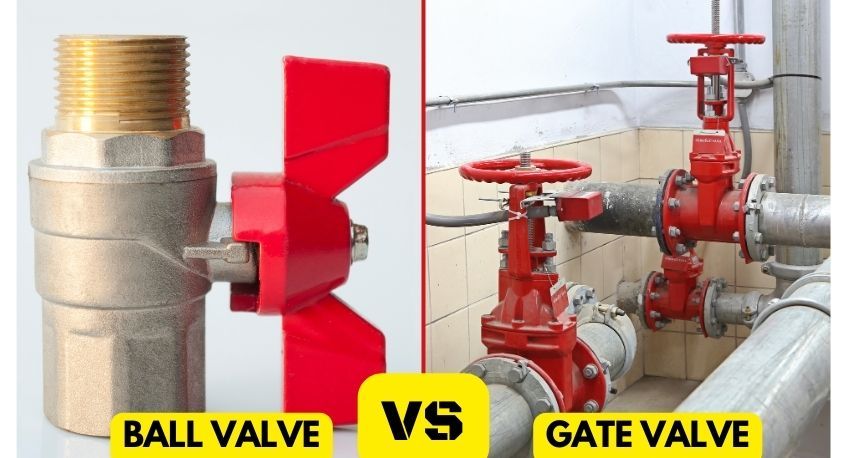
Gate valves and ball valves are two of the most widely used types of valves in industries and households. Both valve types are available in an extensive variety of temperature and pressure ratings, which make them suitable for a lot of applications.
Although all valves serve a similar purpose, however, the design of gate and ball valves differs, which makes them better for certain environments. Whether you are an industrialist or a house owner, you need to know the difference between a gate valve and a ball valve if you want to get the most benefit from your pipeline network. This blog will give you a detailed comparison between ball and gate valves so that you can make the right choice for your plumbing.
This kind of valve uses a gate to block the flow of liquid in a pipeline. The gate is a barrier that can be raised or lowered to either completely stop or start the liquid flow in the pipeline. The main components of the gate valve are the valve body, disc, seat shaft, actuator and gland. Unlike other valve types, a gate valve has only two basic modes regarding liquid flow which are full flow and complete blockage. There is no third mode of slowing down liquid flow.
The gate valve design is cylindrical with threaded ends on either side. The top end consists of a bonnet, which is a seal for other valve components. The stem houses a rod that is attached to the gate, and the gate is wedge-shaped like a disc. The user turns the valve handle to raise or lower the gate.
Gate valves have multiple benefits that make them immensely useful
Although they offer a lot of benefits, gate valves have their fair share of drawbacks as well.
A ball valve is another type of valve commonly used in fluid systems. The main feature of the ball valve is a round component shaped like a ball, which acts as the flow barrier. A quarter-turn lever is used to rotate the ball and completely open or close the ball valve. The ball component has a hole, and when the hole is in the same direction as the fluid flow, the valve is open, and when the ball is rotated 90 degrees, the liquid flow becomes blocked, and the valve is shut. There are several types of ball valves suited for various pipeline systems.
The functionality of the ball valve depends on three components: the ball, the seam and the seats they are all located inside a housing. The ball is fixed between two seats. The stem or lever is connected to the ball, making it easy to turn the lever to rotate the ball.
When deciding between ball valves and gate valves, several crucial factors must be considered. Ball valves are typically recommended for low-pressure, low-temperature situations, especially in tight spaces, while gate valves are better suited for high-pressure, high-temperature environments where optimizing fluid flow is essential. Additionally, factors such as the speed of opening and closing, sealing capabilities, cost, and connection type should be taken into account.
For example, ball valves are preferred for applications requiring swift opening and closing or emergency shutoff, whereas gate valves require a full 360° turn, resulting in slower operation. Moreover, ball valves provide tight sealing and complete shutoff characteristics, making them ideal for applications like natural gas, where a reliable, long-term seal is crucial. Despite typically having a higher initial cost compared to gate valves with similar specifications, the durability and reduced maintenance requirements of ball valves often lead to long-term cost savings. When it comes to saving on maintenance costs, the ball valve quality is especially important, and buying a low-quality one would get damaged much more quickly. So, make sure to buy top-quality ball valves from a reputable vendor. This would save you a lot of headaches regarding replacement and maintenance expenses.